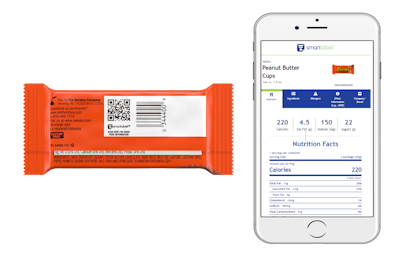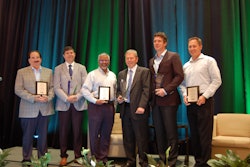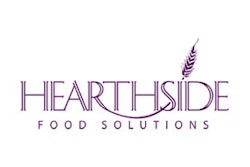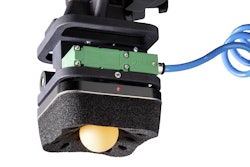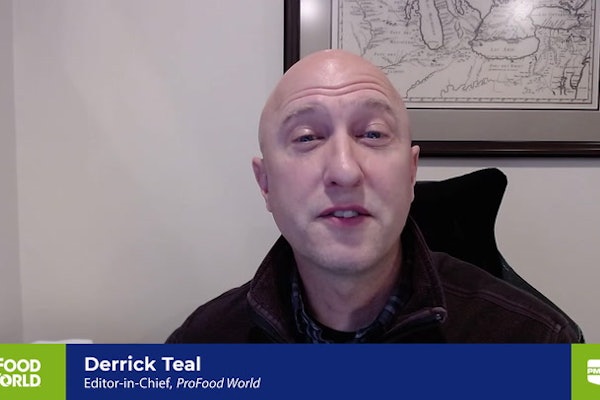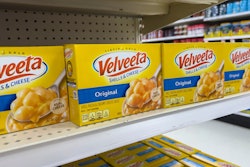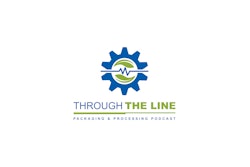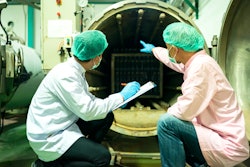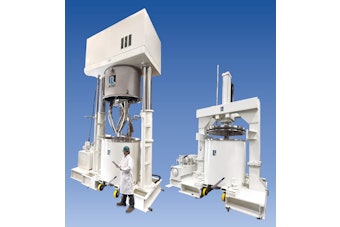Consumers are more conscientious about what they eat and drink than ever before, demanding more information about the products they buy and consume. The Hershey Company has been at the forefront of catering to those demands. The candy and snack maker was the first company to use SmartLabel, a digital labeling tool that allows consumers to access detailed information about products at their fingertips that isn’t typically available on traditional packaging — creating transparency with their consumers and helping them make informed decisions.
Hershey has been using SmartLabel for three years to conveniently and instantaneously deliver a plethora of information about its products to consumers. The digital platform involves Hershey printing QR codes on its products’ packaging. Consumers use their smartphones to scan the QR codes, which take them to an online landing page. The web page contains information about that product’s attributes, including nutritional data, ingredients, allergens and sourcing practices, such as whether the product uses genetically modified ingredients. For those consumers who don’t own smartphones, they can access the landing pages by conducting a search on the web, accessing web links on the company or brand's website, or visiting SmartLabel.org.
Effective communication
According to Deb Arcoleo, director of product transparency at Hershey, the SmartLabel digital technology accommodates the way people shop today while making it easy for CPGs to publish a large amount of information about their products and update it regularly. A 2016 Pew Research Center study found that 77 percent of Americans own smartphones. According to Deloitte’s 2015 American Pantry Study, 55 percent of consumers conduct product research online or through mobile apps. With SmartLabel, CPGs are able to satisfy consumer demand for more comprehensive product information, such as third-party certifications and whether the product is produced in a sustainable way — information that is difficult to convey on the limited space of product packaging, Arcoleo says.
“The whole premise of SmartLabel is to go beyond the label,” Arcoleo explains. “You can share much more information on the SmartLabel landing pages than you can print on the space on the package.”
“[CPGs] really rely on packaging to do all the communication about what’s in a product, and the amount of information consumers want to know is increasing rapidly,” she adds. “The package just isn’t a good communication vehicle. Meanwhile everybody’s walking around with phones in their pockets. We thought, ‘Isn’t there a way that we could leverage mobile phones to deliver product information to consumers at the point of sale?’”
Arcoleo and her team at Hershey developed the prototype for SmartLabel in 2014 in anticipation of the federal government passing a law about GMO disclosure labeling. After creating the prototype, Hershey worked with the Grocery Manufacturers Association (GMA) and its CPG member companies to further develop the technology and program guidelines for a wide range of products: food, beverage, personal care, household and pet care.
Packaging logistics
When GMA launched SmartLabel in 2015, Hershey was the first company to use the tool. Its holiday packages of Hershey’s Kisses were the first products to bear the SmartLabel QR code. Since 2015, the company has been gradually rolling out the SmartLabel QR codes to other products in its portfolio and has completed publishing live landing pages for all products. It anticipates about three-quarters of its more than 2,200 products will have the QR codes on its packaging by early 2019. Hershey’s gum and mint products won’t display the QR codes because the packaging is too small.
While changing packaging to add a QR code to a product line can be an expensive and complex endeavor for many CPGs, Hershey’s participation in the SmartLabel program fortuitously aligned with plans it already had to make changes to its packaging. When the company initially began using the SmartLabel QR codes, Hershey was in the midst of redesigning and printing new packaging to comply with the FDA’s requirement to use the new Nutrition Facts label. In addition, Hershey changes the packaging for about 75 percent of its products seasonally. So the company simply added the QR code to packaging when each product was scheduled for new packaging without incurring exorbitant costs.
To implement the SmartLabel program, Hershey did have to upgrade its legacy information system and invest in a new product information management system, which interfaces with all of the company’s source systems and stores the information and graphics for each product that is part of the SmartLabel program. It allows Hershey to easily and consistently update its SmartLabel landing pages when the company changes the formulation of its products.
“We can go into our recipe system and make that change in one place, one time. It will automatically change any affected SmartLabel page, and we’ll just republish those pages. So in literally seconds, it will make the changes. It’s so easy to make a change like that,” Arcoleo says.
“Likewise, our supply chain organization, for instance, switches back and forth between beet sugar and cane sugar for cost reasons. Well, cane sugar is not genetically modified, but beet sugar is genetically modified,” she adds. “So if they make those sourcing decisions, we don’t have to keep reprinting our packaging. We just change the GMO disclosure statement in SmartLabel, and poof, we’re done.”
Proof in numbers
The analytics prove that consumers are interested in the information featured in the SmartLabel pages, according to Arcoleo. In 2017, 160,000 users visited Hershey’s SmartLabel pages, with about 285,000 page views. About 97 percent of those views originated from the QR codes. Arcoleo expects those numbers to grow now that GMA has kicked off its consumer awareness campaign to publicize the SmartLabel program with the general public. Currently about 29,000 food, beverage, personal care and household products use the SmartLabel QR codes, according to GMA.
Arcoleo also predicts that more CPGs will take part in the SmartLabel program because it offers them an easy way to provide the transparency that consumers crave.
“Transparency is here to stay. If people want to know what’s in their product, they can go online and find out anything they want to know about that product, about your company. But a lot of that data does not come from the manufacturers, so it’s sometimes incorrect, out of date,” Arcoleo says. “SmartLabel offers better, accurate information, is much more cost efficient, very scalable and responsive to whatever information consumers want to know. It just makes complete sense to use it.”
Arcoleo spoke about Hershey’s successful journey with SmartLabel at ProFood Tech 2017. To learn more about technology advances in food and beverage processing and packaging, don’t miss ProFood Tech 2019, scheduled for March 26-28 at Chicago’s McCormick Place. Learn more about ProFood Tech.
